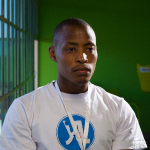 Sergio Pena Jul 19, 2014 09:44 |
Excellent idea but limited on scale. How would you manage the need to have mangorves around the world and what about warming the mangorves in such a scale that everything will be destroyed or mangroves will be under water? Take my question and possibly might them enrich your work. Best. Sergio
|
 Poh Poh Wong Jul 19, 2014 11:27 | Proposal contributor
Thank you for your comment. This proposal is meant for a coastal community to plant mangroves in a manner different from the normal procedure, i.e. not planting individual seedlings on the coast. Instead several seedlings are grown in each module and when the seedlings have reached their required heights, the modules can be deployed to different coasts requiring protection from coastal erosion and against sea level rise. Alongi (2008) has shown that mangroves can keep up with a sea level rise of 10 mm/year. That is why I am optimistic about modular planting of mangroves to ensure a higher survival rate.
|
 Climate Colab Aug 6, 2014 08:16 |
Judges' Comments:
Thank you for your submission to the Climate CoLab adaptation contest. The judges like the underlying idea of this proposal and how it is proactive, local, doable and scalable. Community-based mangrove nurseries and plantation programs could be an excellent way to fortify vulnerable coastlines, but importantly, the operational and practical elements of this proposal need much more detail. How will this program run at a real and practical level? Who would oversee and care for the nurseries? Where would the funding come from? How exactly would the local community be involved, and what incentives would they have to participate? What approach would be used in engaging the community, and different levels of government? The localness and the links to development (even livelihoods) can and should be highlighted to make this a case of 'development as adaptation' as well as 'adaptation as development.' The scale of this proposal may be relatively small, but the workability could be high - and if this is successful, it may be replicable by proponents or others across the world, potentially in a number of developing countries. The judges would like to see a detailed plan of action for the next round. Congratulations on advancing to as a semi-finalist, and the adapation contest team looks forward to seeing your revised proposal for the final submission.
|
 Poh Poh Wong Aug 14, 2014 01:01 | Proposal contributor
The judges like the underlying idea of this proposal and how it is proactive, local, doable and scalable.
Proactive - as the project recognizes one of the major challenges facing coastal communities and outlines an adaptation strategy. Local - as the project involves the members in a coastal community in various activities that they can benefit from short-term to long-term. Doable - as mangrove rehabilitation involving local communities has a good record. Scalable - as this can be replicated by other communities and scaled up if more resources and funds are available.
Community-based mangrove nurseries and plantation programs could be an excellent way to fortify vulnerable coastlines, but importantly, the operational and practical elements of this proposal need much more detail.
The critical operational and practical elements over time are detailed below :
Year 1
• Workshop on project – involved entire community, government representatives, other interested parties.
• Construction of a nursery (building a hut with storage areas and shelves) – involved local carpenters.
• Collection of seeds/wildings (5,000 seedlings/ha) – involved some locals with knowledge to collect sufficient seeds/wildings.
• Manufacture of modules (2,500 if each module contains 2 plants) – involved more locals with necessary skills.
• Planting of seeds/wildings in modules – involved few locals on long-term contract.
Year 2 - 5
• Maintenance and monitoring of modules (take a few years depending on height required) – involved one or two locals under a supervisor who will also keep the records.
• Deployment of modules to coast – involved locals on piecemeal basis. Advice is to be obtained from research organizations, NGOs, government, and experts on the deployment of modules to protect coast and adapt to rising sea level.
Year 5 and beyond
• Maintenance and monitoring of modules on coasts (take 5-20 years) – by which time, additional benefits would accrue for villages, e.g. sustainable fishing (can also involve aquaculture on the ratio of mangroves : ponds at 5:1 in terms of acreage) – involved one or two locals under a supervisor.
How will this program run at a real and practical level?
Initial approval is important and necessary from the various levels of government and from the village head/council. The initial workshop is important as it provides an opportunity to identify both opportunities and problems of the local community and see the extent how the program can run at a real and practical level. For example, to what extent can the locals contribute to the local knowledge of mangroves, seeds collection, manufacture of suitable modules, etc. The actual construction of a nursery, the maintenance and monitoring of the mangroves and the deployment of the modules to the coast are not major issues as technology and skills are available. For the deployment, information is required from various experts on where to best deploy the modules in protecting the coast and adapt to a rising sea level.
Who would oversee and care for the nurseries?
The nursery can be constructed easily by local craftmen (many in coastal fishing communities). To oversee and care for the nursery a full-time supervisor will be engaged. The supervisor will also take charge of those engaged to collect seeds/wildings and the manufacture of modules.
Where would the funding come from?
The funding can come from several sources :
• Contest prize money.
• Companies wanting to do CSR (corporate social responsibility).
• Certain companies wanting to benefit later from the internalization of the project, e.g. coconut plantations that can supply coconut fibre, paper companies that can manufacture biodegradable hardened cardboard modules.
• Interested NGOs.
• Concerned and interested individuals
• Myself (small portion of annuity)
How exactly would the local community be involved, and what incentives would they have to participate?
Within the local community, the approval and support from the village head/council is essential. Other related associations, e.g. fisherfolk association, can be involved too. The project involves various specific activities over time in which the locals can be involved and employed on a piecemeal basis. The manufacture of the modules offers vast potential for more locals to get involved in the project. At least one supervisor can be engaged on a long term basis to oversee the project on the ground. Other long-term benefits accrue to the community including the benefits in fishing from mangrove rehabilitation and possible ecotourism.
What approach would be used in engaging the community, and different levels of government?
There is no one approach to engage the local community – it depends on local conditions and the existing administrative structures and legislation. But it is necessary to involve the village head/council. Once a tentative agreement is obtained from the village, the higher levels of government will be approached to obtain their written consent/agreement. Then, the project plan has to be explained to the village head/council and key members of the community. This would be carried in one of more workshops for all interested locals.
The localness and the links to development (even livelihoods) can and should be highlighted to make this a case of "development as adaptation" as well as "adaptation as development."
An initial and key step to link development and adaptation in a win-win situation starts with one or more workshops for the local community. These workshops are to explain the phases of the project, the activities, the benefits for community, the time-lines of activities, and the projected long-term development for the village and adaptation to climate change
The scale of this proposal may be relatively small, but the workability could be high – and if this is successful, it may be replicable by proponents or others across the world, potentially in a number of developing countries.
The project needs to start with a single community near the coast that requires protection (rehabilitation). The size of the community can be a few hundred people or about 100 households. The project works through the village chief/council and the local organizations related to coastal activities (e.g. fishing/aquaculture association). It trains and involves selected local members in various activities of project. For replicability, the village can be used as a demonstration site and also runs further workshops for trainers.
|
 Victor Blanco Aug 26, 2014 03:26 |
I think is a great proposal. I can share some pictures of community experience in a coastal lagoon in Venezuelan Margarita Island. I´m marine biologist and I would love to help in anything you need. Also check the publication "Blue Carbon: The role of healthy Ocean in Binding Carbon", published by United Nation Environmental Program, and you will see some important infomation about mangroove services in carbon cycle. http://www.grida.no/publications/rr/blue-carbon/. I wish you the best! Please, check my proposal in Waste Management Contest, named "REACC"; and I would apreciate your support.
|
 Climate Colab Sep 3, 2014 12:24 |
Judges' Comments:
Thank you for submitting a final proposal. The judges appreciate how your proposed work appears to be more realistic than before, in terms of timelines and such. The actions look do-able and this could be a promising idea for addressing coastal erosion and adaptation needs, but you can still keep solidifying your proposal with more concrete details. As you move forward with this, you are strongly encouraged to continue using the judges’ feedback to help guide your work. There is always room for improvement, and the judges would like to see you respond further to the questions and comments that were raised during semi-finalist selection. For ease of reference, the judges’ initial suggestions have been summarized by a contest fellow below:
Suggested improvements summary:
- More detail on operational and practical elements of the proposal
o How will it run at real and practical level?
o Who would oversee and care for the nurseries?
o Where would funding come from?
o How would local community be involved?
o What incentives for participation?
- Highlight links to development and livelihoods to make case for “development as adaptation” / “adaptation as development”
Congratulations on a strong proposal, and the adaptation contest team wishes you the best of luck!
|
 Hemant Wagh Sep 5, 2014 12:47 |
If you could consider requesting your future clients to store throughout the year the seeds of fruits they eat at home and spread those seeds, after commencement of Mansoon, the rainy season, on to unused land in & around the city, town, village, as an activity that would help improve green cover! Rather than wasting the fruit seeds by letting decay, this would help grow fruit-bearing trees as well. Following is a link to such a proposal.
https://www.climatecolab.org/web/guest/plans/-/plans/contestId/1300103/planId/1310401
This would bolster the efforts directed at finding workable solution to climate change..
|
 Osero Shadrack Tengeya Sep 17, 2014 04:45 |
Hi ppwong and your friends, kindly consider voting for my proposal shown on this link.
https://www.climatecolab.org/web/guest/plans/-/plans/contestId/1300206/planId/1002
Thanks.
|
 Anne-marie Soulsby Sep 23, 2014 04:59 |
Hi ppwong,
Please consider voting for my proposal, https://www.climatecolab.org/web/guest/plans/-/plans/contestId/1300801/planId/1309001
Good luck with your entry!
Asante/Thank-you
@conserveaction
|
 Poh Poh Wong Sep 29, 2014 02:58 | Proposal contributor
In response to the judges’ comments in the semi-final rounds, I would like to focus on two main points:
1) Addressing coastal erosion and adaptation needs:
In order to address different degrees of coastal erosion and on various types of substrates, mangroves are grown to various heights and in modules which can be deployed in larger numbers quickly to any eroding coast. The modules being made from available natural materials, e.g. coconut fibre, shell and trunk, bamboo, jute, etc, are self-destructive and become part of the substrates. Avicennia marina is recommended as this species can grow on various substrates and has a wide geographical range, tolerating wider environmental conditions, including salinity and climatic conditions.
In the review by Alongi (2008) of various studies, sediment accretion rates in various mangrove forests can keep up with 1mm rise in sea level per annum. If additional sediments and nutrients are added to the mangroves I am confident that the mangroves can keep up with a sea level rise of more than 1mm per annum. Wetlands International in their brochure “Wetlands and climate change adaptation” stated that “Intact and healthy mangrove systems can adapt to sea level rise; their growth can accommodate to increases of 3.8 to 9 millimetres per year depending on local circumstances”.
Thus, I am confident that mangroves grown to height (i.e. maturity) are a better option than the usual procedure of planting individual young seedlings for addressing coastal erosion and adaptation to sea level rise.
2) Making the case for “development as adaptation”/”adaptation as development”
The collection of mangrove fruits and their germination in bags in a nursery represents the first level of development for the villagers moving away from their traditional activities of fishing. I do not want to see villages stuck to one level of development if the usual procedure of planting mangroves is followed. The move to use modules for mangrove seedlings can be considered as moving to a higher level of development for the villages, as suitable materials have to be sourced, adapted and manufactured. It is possible that small machine shops can be set up to produce the modules in larger numbers and a standardized format, thus pushing development to a higher level. More skills have to be developed as modules are then deployed to the coasts. When mangroves are fully grown, the forests themselves could open opportunities for villages to another level of development, e.g. ecotourism development. Thus, the timeline from mangrove seedlings to their maturity along the coasts generates increasing levels of development/opportunities for the villages and at the same time improves adaptation to sea level rise.
On the comment on keeping excess mangrove seeds for other purposes it should be noted that some mangrove fruits can be gathered seasonally, while others are available through the year. Fruits not used for seedlings can be used for food. The preparation of various types of food is available in “Cooking with mangroves : 36 Indonesian mangrove recipes” published by the Mangrove Action Project (MAP) in 2006. I was at a mangrove meeting in Surabaya, Indonesia, in Feb 2013 and saw various mangrove products, e.g. syrup/honey, crackers and sweets, on sale.
|
 Hemant Wagh Oct 3, 2014 08:00 |
Not just Mangrove seeds, in fact many fruits have seeds that are usable as food, hence the need to save the fruit seeds and spread on unused land..
|
 Victor Blanco Oct 4, 2014 11:04 |
Congratulations!!!
Please check the "Discusion Section" in the "Community" label... Proposal of activity during the Conference Session of 2014 Winners...
https://www.climatecolab.org/web/guest/discussion#discussion%3DpageType%3ATHREAD%2CthreadId%3A1337218
|
